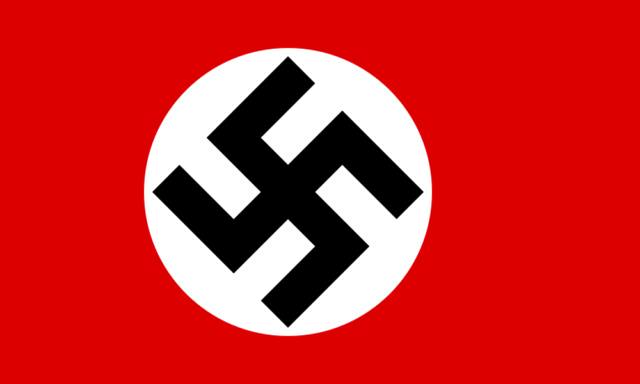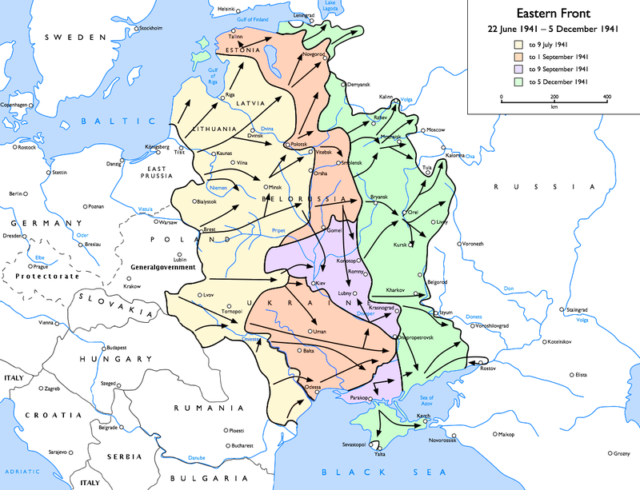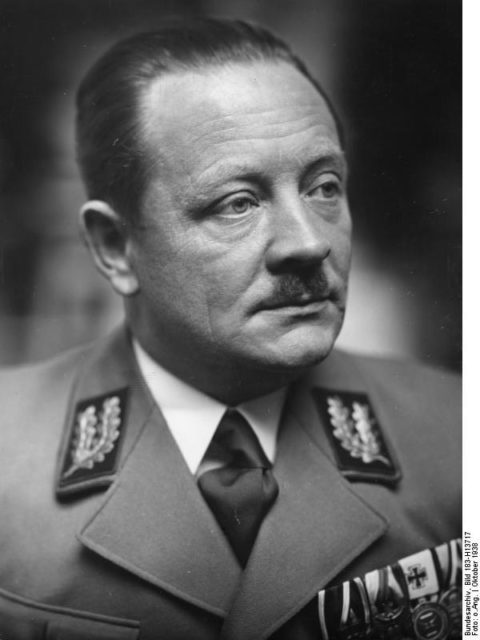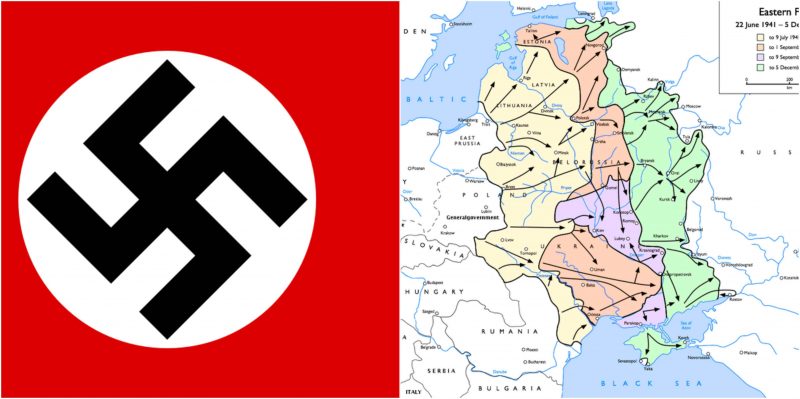“Reichskommissariat Moskowien”, which translates to Reich Commissariat of Muscovy (Moscow), was the civilian occupation plan Nazi Germany meant to make in northern and central European Russia throughout the duration of WWII.
Siegfried Kasche had been the projected Reichskommissar, because of the German failure to occupy the territories that was intended to form the Reichskimmissariat, this idea remained on paper only.
The Nazis wanted to destroy Russia permanently, not taking into account if it had been Capitalist, Communist or even Tsarist.
The policy of Adolf Hitler’s Lebensraum, expressed in Mein Kampf, had been to deprive the Russians of their land.

This was also to happen with other slaves in Poland, and most of Eastern Europe. Reported plans were to either dismiss a majority of the slaves beyond the Ural Mountains, or to kill them by different means.
German colonial settlement had been encouraged (General plan Ost), and as the campaign against the Soviet Union advanced eastward, the occupied territories would slowly be transferred from the military to civilian administration.
The final decision Hitler made on the administration involved the new eastern territories being divided into four Reichskommissariate.
This plan was to destroy Russia as a geographical existence by dividing it into as many different parts as possible.
These new policies were to be under the official supervision of Reichsleiter Alfred Rosenberg, the head of the Reich Ministry for the Occupied Eastern Territories.
The leaders of the provinces, the Reichskommissars, would be the direct subordinates of Hitler, and could only answer to him.
The conquered territories of Russia were supposed to become a Reichskommissariat Russland, as stated in Rosenberg’s plan. This had been later altered to Moskowien (Muscovy) informally as well as recognized Moskau (Mosow).
The eastern districts were believed to be the most delicate to administer, of the territories that were conquered. As a result, they were managed from the regional capitals and directed by the German government.
In the end the plans were never fulfilled.
The German military operation to capture Moscow and central Russia failed, and it marked Germany’s lack of success in the region.
There was no completion of the Nazi civilian rule.
The province that was envisioned included most of Russia in the middle of the Ural mountains, as well as districts east of it, and the city of Sverdlovsk.
The boundaries with Ukraine, Belarus, Baltic States, and Finland were also a part of this plan.
The Russian surroundings of the Caucasus region were going to be controlled by a separate Reichskommissariat Kaukasus, while the rest of southern Russia was going to be mixed into the Reichskommissariat Ukraine.
This was intended to extend eastward to the border of Kazakhstan.
There were smaller parts that excluded the Leningrad, Smolensk, Pskov areas, and Kola Peninsula and Eastern Karelia.
They were promised to Germany’s co-belligerent Finland in the year of 1941, for its contribution to the campaign in the east.
This would consequently encompass the same lands that had been once under the control of the past state of Muscovy.
The last territory to be covered was on the west by the Reichskommissariat Ostland and the border with Finland to the north by the Arctic Ocean, located in the east by the Ural Rive and the Ural Mountains, also in the south near the largely expanded Reichskommissariat Ukraine.
The province had plans to create boundaries, which were subdivisions of the pre-existing Russian oblasts.
These were supposed to be positioned in Ufa, Molotov, Kirov, Kazan, Tula, Gorki, and Leningrad.
The capital of this was loosely declared as Moscow, the cultural and political capital of Russia.

However as German forces were moving across Russia during their 1941 advance, Hitler changed his mind about his plans for Moscow.
It was determined that Moscow would be completely demolished, and the 4 million residents would be slaughtered due to fears of mutiny from the city.
Hitler’s new plans were for a manmade lake that would permanently submerge the proud Russian city.
This would be done by destroying sections of the Moscow-Volga Canal. Part of the advance on Moscow was designed to capture and take control of the dam structures.
He stated his intentions during a conference on July 16th, 1941, along with his plans for the division of the territories of East.
The Crimean peninsula, along with a large portion of land to the north (which is most of the southern part of Ukraine) was to be cleared by the current inhabitants and then resettled exclusively by Germans.
The land was going to be rebuilt as firmly established German territory.
Another Austrian territory was to be treated in the same fashion, as well as the Baltic States and the Baku district.
In the beginning, plans created a limit across the East known as the A-A line.
This was known as the boundary that would run across the Volga River in the middle of Archangelsk and Askrakhan.
It was speculated that the Soviet Union wouldn’t fall immediately even though they were battered and beaten.
Aerial combat was to be carried out even though there was no chance any of the Luftwaffe’s bombers had the skill set to perform the task.
Political leadership

Rosenberg first declared that the brutal Nazi leader Erich Koch would become Reichskommissar on the 7th of April, in 1941.
This job was very different to the providence that was located in the Baltic Sea. The title was given to Koch because of his reputation. The Russian and Bolshevist resistance was expected to be strong, so someone who was ruthless on both the battlefield as well as in politics was needed.
Koch first dismissed his nomination due to the fact that he felt he was given the job due to his negative reputation. He was later given control of Ukraine as a substitute.
After Koch’s dismissal, Hitler chose Wilhelm Kube to step in. This was however rejected by Hermann and Rosenberg, who saw him as too old to hold such an intense position. He was relegated to Belarus.
After much deliberation, it was SA-Obergruppenführer Siegfried Kasche who got the position.
Von Allwörden then chose to promote himself to become nominated as the Commissioner for Economic Affairs throughout the area of Moscow. Kashe’s nomination was met with resistance by Heinrich Himmler, who considered him a troublemaker.
He was described as a man behind a desk who was a vocal enemy of the SS and had no fluency and strength of intelligence.
Erich von dem Bach-Zalewski was chosen to run the Higher SS in the area as well, being placed in charge of the Police force in the region.
He was already stationed in Central Russia, so he could immediately take the position when it was needed most.
